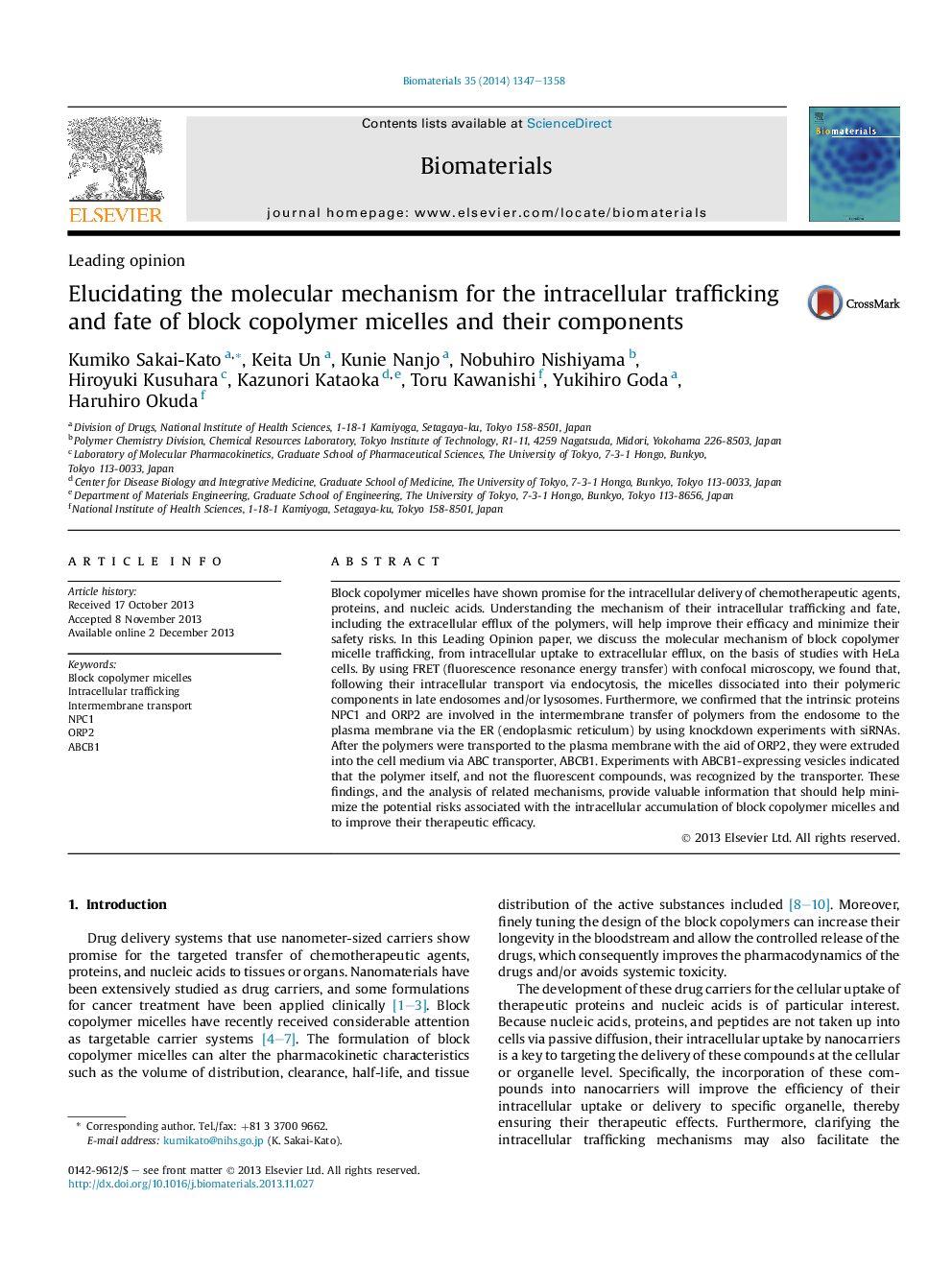| Article ID | Journal | Published Year | Pages | File Type |
|---|---|---|---|---|
| 10227412 | Biomaterials | 2014 | 12 Pages |
Abstract
Block copolymer micelles have shown promise for the intracellular delivery of chemotherapeutic agents, proteins, and nucleic acids. Understanding the mechanism of their intracellular trafficking and fate, including the extracellular efflux of the polymers, will help improve their efficacy and minimize their safety risks. In this Leading Opinion paper, we discuss the molecular mechanism of block copolymer micelle trafficking, from intracellular uptake to extracellular efflux, on the basis of studies with HeLa cells. By using FRET (fluorescence resonance energy transfer) with confocal microscopy, we found that, following their intracellular transport via endocytosis, the micelles dissociated into their polymeric components in late endosomes and/or lysosomes. Furthermore, we confirmed that the intrinsic proteins NPC1 and ORP2 are involved in the intermembrane transfer of polymers from the endosome to the plasma membrane via the ER (endoplasmic reticulum) by using knockdown experiments with siRNAs. After the polymers were transported to the plasma membrane with the aid of ORP2, they were extruded into the cell medium via ABC transporter, ABCB1. Experiments with ABCB1-expressing vesicles indicated that the polymer itself, and not the fluorescent compounds, was recognized by the transporter. These findings, and the analysis of related mechanisms, provide valuable information that should help minimize the potential risks associated with the intracellular accumulation of block copolymer micelles and to improve their therapeutic efficacy.
Related Topics
Physical Sciences and Engineering
Chemical Engineering
Bioengineering
Authors
Kumiko Sakai-Kato, Keita Un, Kunie Nanjo, Nobuhiro Nishiyama, Hiroyuki Kusuhara, Kazunori Kataoka, Toru Kawanishi, Yukihiro Goda, Haruhiro Okuda,
